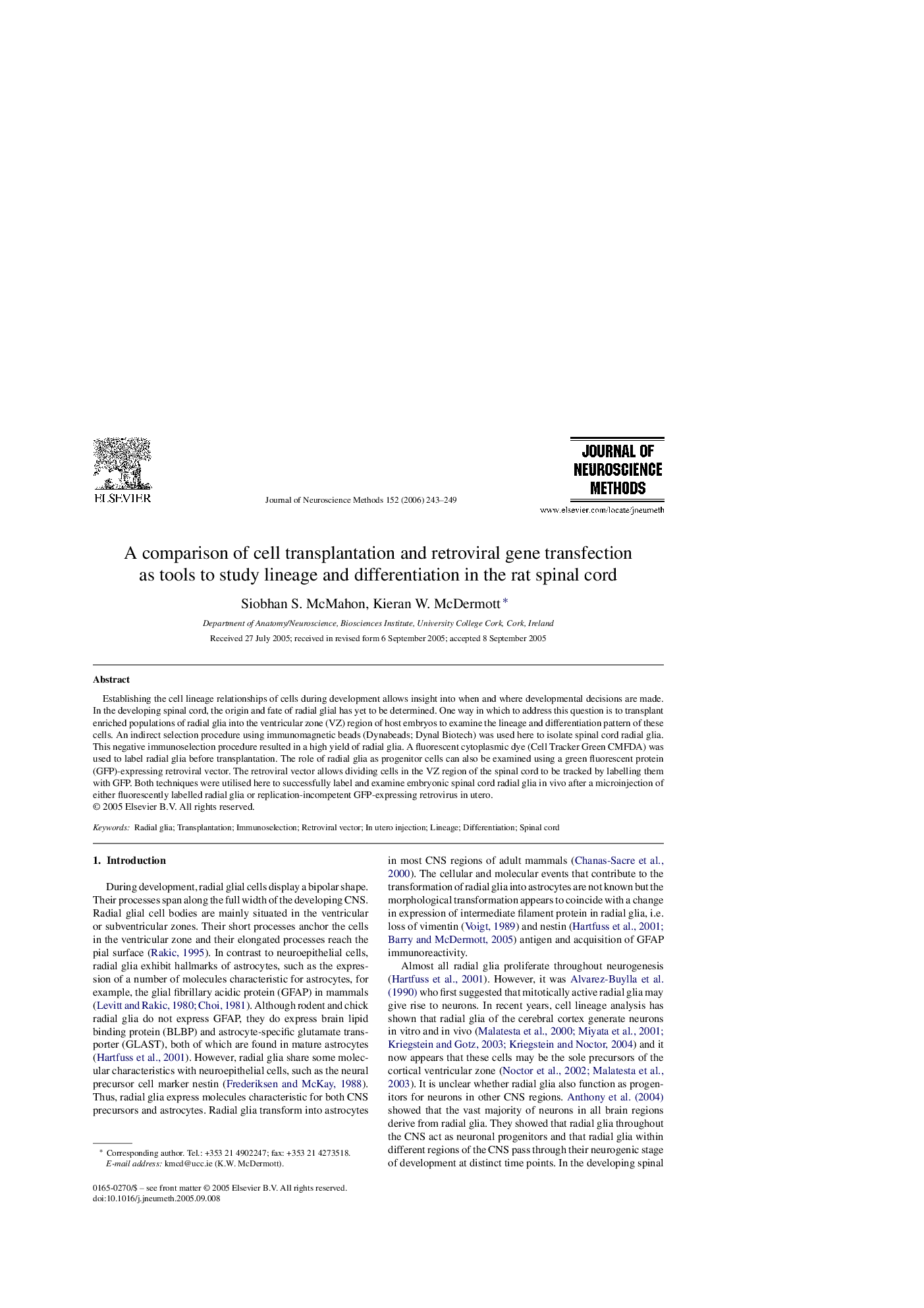| Article ID | Journal | Published Year | Pages | File Type |
|---|---|---|---|---|
| 4337039 | Journal of Neuroscience Methods | 2006 | 7 Pages |
Abstract
Establishing the cell lineage relationships of cells during development allows insight into when and where developmental decisions are made. In the developing spinal cord, the origin and fate of radial glial has yet to be determined. One way in which to address this question is to transplant enriched populations of radial glia into the ventricular zone (VZ) region of host embryos to examine the lineage and differentiation pattern of these cells. An indirect selection procedure using immunomagnetic beads (Dynabeads; Dynal Biotech) was used here to isolate spinal cord radial glia. This negative immunoselection procedure resulted in a high yield of radial glia. A fluorescent cytoplasmic dye (Cell Tracker Green CMFDA) was used to label radial glia before transplantation. The role of radial glia as progenitor cells can also be examined using a green fluorescent protein (GFP)-expressing retroviral vector. The retroviral vector allows dividing cells in the VZ region of the spinal cord to be tracked by labelling them with GFP. Both techniques were utilised here to successfully label and examine embryonic spinal cord radial glia in vivo after a microinjection of either fluorescently labelled radial glia or replication-incompetent GFP-expressing retrovirus in utero.
Keywords
Related Topics
Life Sciences
Neuroscience
Neuroscience (General)
Authors
Siobhan S. McMahon, Kieran W. McDermott,
